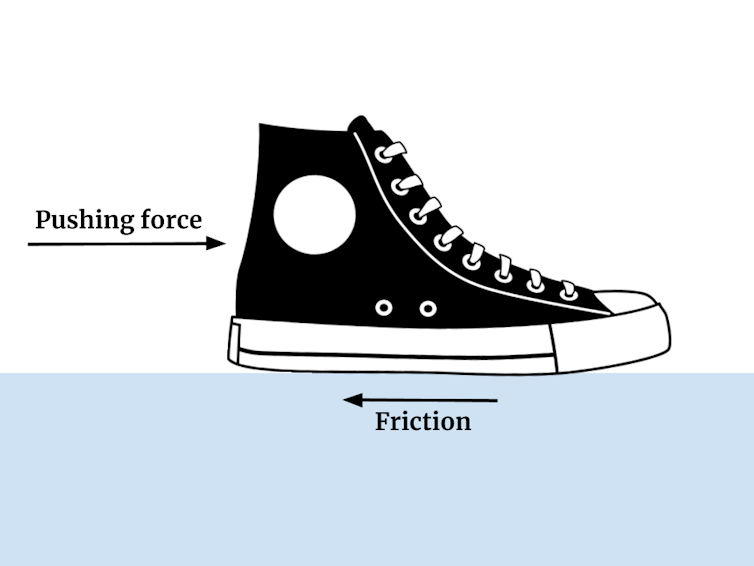Two athletes square off for an intense dance battle. The DJ starts spinning tunes, and the athletes begin twisting, spinning and seemingly defying gravity, respectfully watching each other and taking turns showing off their skill.
The athletes converse through their movements, speaking through a dance that celebrates both athleticism and creativity. While the athletes probably aren’t consciously thinking about the physics behind their movements, these complex and mesmerizing dances demonstrate a variety of different scientific principles.
Breaking, also known as breakdancing, originated in the late 1970s in the New York City borough of the Bronx. Debuting as an Olympic sport in the 2024 Summer Olympics, breaking will showcase its dynamic moves on a global stage. This urban dance style combines hip-hop culture, acrobatic moves and expressive footwork.
Since its inception, breaking has evolved into a competitive art form. An MC narrates the movements, while a DJ mixes songs to create a dynamic atmosphere. The Olympics will feature two events: one for men, called B-boys, and one for women, called B-girls. In these events, athletes will face off in dance battles.
Athletes earn points for creativity, personality, technique, variety, performativity and musicality. Success in this sport requires combining dance moves from three basic categories: top rock, down rock and freeze.
Standing moves
Top rock moves are performed while standing up, focusing on fancy footwork and hand movements. These movements are reminiscent of hip-hop dancing.
Top rock moves rely on having lots of friction between an athlete’s shoes and the floor. Friction is the force that resists when you slide something across a surface.

Friction is the force opposing a pushing force. In breaking, friction from the athlete’s shoes and the floor allows them to execute quick steps and movements.
The Conversation
This friction allows the athlete to take very quick steps and to stop abruptly. The dancers must intuitively understand inertia, or the fact that their bodies will continue in the direction they’re moving unless they are acted upon by an external force. To stop abruptly, athletes need to engage their muscles, getting their shoes to grip the ground to stop themselves from continuing forward.
Athletes, like Olympic qualifier Sunny Choi, left, do very quick footwork – which requires friction.
Floor moves
Down rock moves are performed while on the floor. Athletes may spin in circles with their head, back, elbows or shoulders touching the ground and their feet in the air. B-boys and B-girls rely heavily on an internal knowledge of physics to complete these moves.
Consider the physics of a backspin. A backspin occurs when the athlete is on their back with their feet lifted in the air, rotating around a specific area of their back.
Sitting on the…



